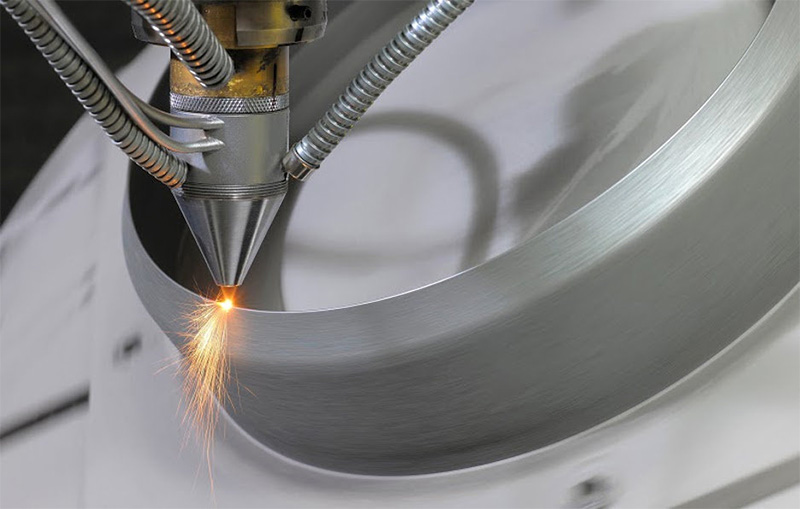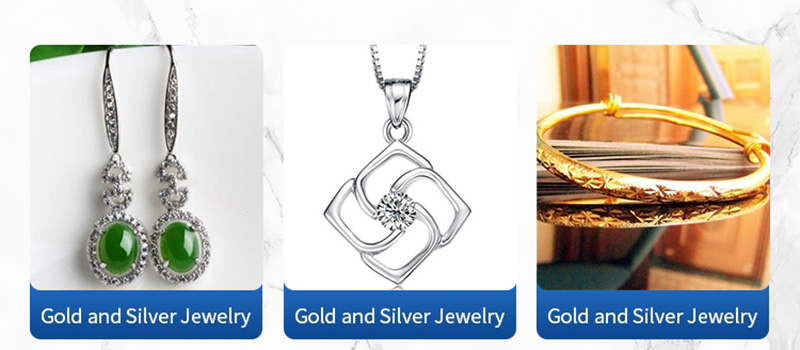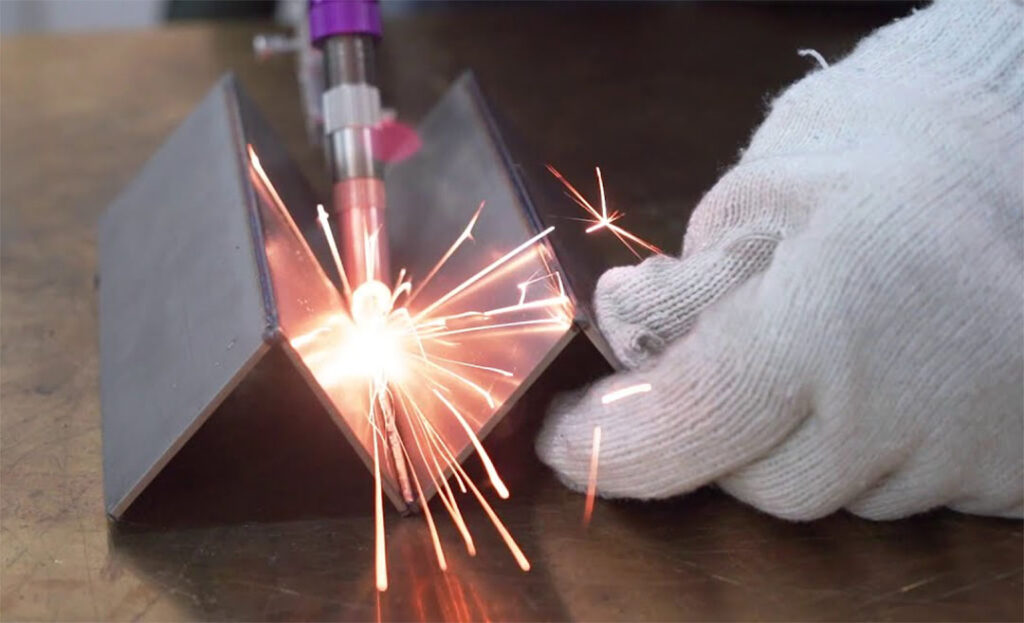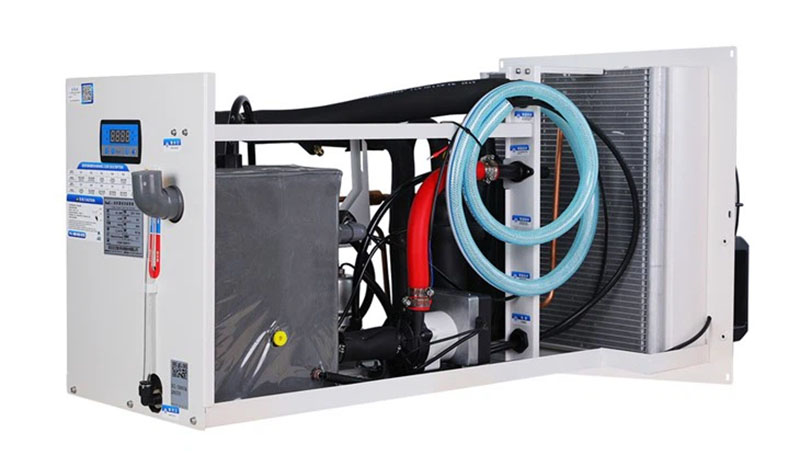Laser welding of dissimilar materials is an operation in which two or more different types of metals are processed and welded in a laser welding process. Due to the advanced nature of the laser welding process, laser welding of dissimilar metals has become common in production life. This type of welding involves welding two completely different metallic materials together to form an intermediate transition layer that is different from the parent material in terms of properties and organization. Due to the differences in elemental qualities, physical and chemical properties of dissimilar metals, the welding principle and operation is more complex than welding of similar metals.
The laser welding process is characterized by high power, high precision and high speed and is applicable to a wide range of metallic and non-metallic materials. Optimization of the weld seam and weld quality of laser welding of metallic materials can be achieved by understanding the joining laws of common metal laser welding.
Common Dissimilar Metal Joining By Laser Welding
Carbon Steel
Carbon steels exhibit different properties in metal laser welding. In the case of low-alloy and low-carbon steels, they are naturally characterized by good weld ability. However, the carbon content needs to be tightly controlled to ≤ 0.25% when using the metal laser welding process, as the risk of cooling cracks increases when the carbon content exceeds 0.3%. Laser welding of carbon steels works well, but the quality of the weld depends on the impurity content. Similar to other welding processes, sulfur and phosphorus are sensitive factors for weld cracking, so preheating is required at carbon contents above 0.25%.
When steels with different carbon contents are welded to each other, it is recommended that the torch is slightly biased to the side of the low carbon material to ensure a quality joint. Low carbon boiling steels are not suitable for laser welding due to their high sulfur and phosphorus content. Medium and high carbon steels and common alloy steels can be laser welded to obtain good results, but preheating and post-welding treatment are required before and after welding to eliminate stress and avoid crack formation.
Stainless Steel
The thermal conductivity of stainless steel is only 1/3 of that of carbon steel, while the heat absorption rate is high. Therefore, stainless steel can be welded with higher depth of fusion during the welding process. With small heat input and fast welding speed, laser welding is well suited for processing and welding Ni-Cr series stainless steels.
Aluminum Alloys
Relatively high energy densities need to be applied when laser welding aluminum alloys because of their high reflectivity and thermal conductivity. However, many aluminum alloy materials contain volatile elements such as silicon and magnesium that can lead to weld processing defects such as porosity and bubbles. These defects are affected by the laser welding power threshold, weld seam shaping and weld process stability. The thickness of the interfacial reaction layer can be reduced and the generation of intermediate phases can be effectively controlled by precisely controlling the laser energy and material action time. Higher purity aluminum alloys are more suitable for laser welding.
Laser Welding Aluminum to Copper
Copper and aluminum are more than just material choices in the manufacture of new energy batteries – they are widely used in the manufacture of battery components as metals with excellent electrical conductivity. By carefully designing the placement of copper and aluminum and employing advanced welding techniques, manufacturers are able to ensure the reliability and performance of battery components under extreme conditions. Therefore, the choice of copper and aluminum is not just a matter of material selection, but also a well-thought-out process of battery design, which has a direct impact on the efficiency and reliability of new energy batteries.
Copper and aluminum have different melting points and thermal conductivities, so they may face some challenges during the laser welding process, such as uneven heat transfer and weld formation issues. These issues may affect the mechanical properties of the joints, thereby reducing their strength. To overcome these challenges, measures such as surface coating treatments can be taken to increase resistance to galvanic corrosion and to strengthen the joint.


The following are the steps involved in laser welding copper and aluminum:
Preparation
Clean the metal surface to remove oxides and dirt.
Ensure that the weld area fits well to ensure a quality weld.
Select the appropriate laser parameters:
Copper and aluminum have different reflectivity and absorption, which requires adjusting the laser parameters. Copper absorbs laser light better, while aluminum has a lower absorption rate. Before welding, test with appropriate welding parameters to ensure good welding quality.
Weld head design
Due to the difference in thermal conductivity between copper and aluminum, special weld head shapes may need to be designed to ensure uniform heat transfer between the two metals.
Gas protection
Protect the weld area from oxidation by using a suitable inert gas such as argon.
Laser welding process
Aim the laser welding machine at the weld area and start the laser source to weld.
Control the welding time and power to ensure that the metal melts and forms a stable weld.
Cooling
Allow the weld area to cool gradually after the weld is completed to ensure a quality weld.
What Materials Can the Laser Welding Machine Weld?
Laser welding is a method that is widely used in the processing of different materials, where the selection of a particular material is influenced by its ability to absorb laser energy as well as other characteristics.
In metals, laser welding can be used to join a wide range of materials, including structural steel, alloy steel, low alloy steel, carbon steel, duplex steel, aluminum, copper, titanium, nickel, magnesium, refractory metals, and chemically active metals. This technique is also suitable for joining workpieces with varying thicknesses.
For plastics, thermoplastics such as polycarbonate, nylon and ABS can be joined by laser welding, whether transparent or opaque, with or without additives or fillers.
In ceramics, ceramic materials with high melting points and low thermal conductivity, such as alumina, zirconia and silicon carbide, can be joined by laser welding, where cracking due to thermal stresses and mismatched coefficients of expansion need to be avoided.
Composite materials, such as carbon fiber reinforced plastics (CFRP), glass fiber reinforced plastics (GFRP), and metal matrix composites (MMC), can also be laser welded to join similar or dissimilar components, but care needs to be taken to avoid damage to the reinforcing fibers or the matrix material from excessive heat or mechanical stress.
For laser welding dissimilar metals, laser welding machines have a large range of laser parameters for forming alloy structures, two metals with similar melting and boiling points, and the ability to form strong joints. The high cooling rate and small heat affected zone of laser welding creates favorable conditions for compatibility of materials with different structures after welding and melting of many different metals.
It has been demonstrated that a wide range of metals, such as stainless steel, mild steel, 416 stainless steel, 310 stainless steel, 347 stainless steel, HASTALY nickel alloys, nickel electrodes, cold forged steels as well as bimetallic strips with different nickel contents can be welded by laser deep fusion welding without any problems.


Can You Weld Dissimilar Metals?
Below is a table of common dissimilar metal welding possibilities to provide you with a comprehensive guide to Laser welding of dissimilar metal combinations.
| Al | 2 | Remark | ||||||||||||||||||||
| Au | 1 | 5 | 1. Good compatibility | |||||||||||||||||||
| Be | 5 | 2 | 5 | 2. High possibility | ||||||||||||||||||
| Cd | 2 | 5 | 5 | 4 | 3. Small possibility | |||||||||||||||||
| Co | 3 | 5 | 2 | 5 | 3 | 4. Difficulty | ||||||||||||||||
| Cr | 2 | 5 | 3 | 5 | 3 | 2 | 5. Impossible | |||||||||||||||
| Cu | 2 | 2 | 1 | 5 | 5 | 2 | 2 | |||||||||||||||
| Fe | 3 | 5 | 2 | 5 | 3 | 2 | 2 | 2 | ||||||||||||||
| Mg | 5 | 2 | 5 | 5 | 1 | 5 | 5 | 5 | 3 | |||||||||||||
| Mn | 2 | 5 | 5 | 5 | 3 | 2 | 2 | 1 | 2 | 5 | ||||||||||||
| Mo | 3 | 5 | 2 | 5 | 4 | 5 | 1 | 3 | 2 | 3 | 3 | |||||||||||
| Nb | 4 | 5 | 4 | 5 | 4 | 5 | 5 | 2 | 5 | 4 | 5 | 1 | ||||||||||
| Ni | 2 | 5 | 1 | 5 | 3 | 1 | 2 | 1 | 2 | 5 | 2 | 5 | 5 | |||||||||
| Pb | 2 | 2 | 5 | 4 | 2 | 2 | 2 | 2 | 2 | 5 | 2 | 3 | 4 | 2 | ||||||||
| Pt | 1 | 5 | 1 | 5 | 5 | 1 | 2 | 1 | 1 | 5 | 5 | 2 | 5 | 1 | 5 | |||||||
| Re | 3 | 4 | 4 | 5 | 4 | 1 | 1 | 3 | 5 | 4 | 4 | 5 | 5 | 3 | 4 | 2 | ||||||
| Sn | 2 | 2 | 5 | 3 | 2 | 5 | 2 | 2 | 5 | 5 | 5 | 3 | 5 | 5 | 2 | 5 | 3 | |||||
| Ta | 5 | 5 | 4 | 5 | 4 | 5 | 5 | 3 | 5 | 4 | 5 | 1 | 1 | 5 | 4 | 5 | 5 | 5 | ||||
| Ti | 2 | 5 | 5 | 5 | 5 | 5 | 1 | 5 | 5 | 3 | 5 | 1 | 1 | 5 | 5 | 5 | 5 | 5 | 1 | |||
| V | 3 | 5 | 3 | 5 | 4 | 5 | 3 | 3 | 1 | 4 | 5 | 1 | 1 | 5 | 4 | 5 | 3 | 5 | 5 | 1 | ||
| W | 3 | 5 | 4 | 5 | 4 | 5 | 1 | 3 | 5 | 3 | 3 | 1 | 1 | 5 | 3 | 1 | 5 | 3 | 1 | 2 | 1 | |
| Zr | 3 | 5 | 5 | 5 | 3 | 5 | 5 | 5 | 5 | 3 | 5 | 5 | 1 | 5 | 5 | 5 | 5 | 5 | 2 | 1 | 5 | 5 |
| Ag | Al | Au | Be | Cd | Co | Cr | Cu | Fe | Mg | Mn | Mo | Nb | Ni | Pb | Pt | Re | Sn | Ta | Ti | V | W | |
What are the Advantages of Using Lasers Weld Dissimilar Metals?
- High Precision and Accuracy: Enables the creation of complex joints, especially when alloying elements with widely varying properties.
- Minimal Heat Input: Reduces the possibility of combinatorial damage, especially for dissimilar metals with different melting points.
- Small heat-affected zone: The use of a narrow beam helps to minimize the influence of surrounding materials and reduces the chance of intermetallic compound formation.
- High welding speeds: Increased productivity with fast heating and cooling cycles that reduce the residence time of dissimilar metals in the critical temperature range.
- Suitable for a wide range of materials: Includes both similar and dissimilar materials, making it easy to weld materials with different physical and chemical properties.
- Non-contact process: Precision-controlled laser welding helps ensure clean metal surfaces and eliminates the need for post-weld treatment.
- High-quality welds: Produces defect-free welds, ensuring consistency and reliability.
- Adaptable to different environments: Can weld in a variety of environments, including inert gas atmosphere or vacuum conditions.
- Can be integrated into automation: Automatic laser welding machines can be integrated into production processes that require efficient and repeatable manufacturing.


Different kinds of metal composite parts manufactured by laser welding not only give full play to the excellent performance of the constituent materials, but also significantly reduce production costs, thus greatly improving efficiency. Laser precision welding is mainly applied to key components of electronic products, such as housings, shields, USB connectors, conductive patches and so on. Unique features include minimal thermal distortion, precise control of the work area and position, high weld quality, the ability to weld dissimilar materials, and easy automation implementation.
Laser Spot Welding of Dissimilar Materials
When dealing with laser precision spot welding of dissimilar materials, a series of problems are often faced, especially when laser welding thin sheet dissimilar materials, such as false welds, cracks, and low joint strength. These problems mainly stem from the large differences in the physical properties of the different types of metals, the low degree of mutual solubility, and the tendency to generate brittle compounds that reduce the mechanical properties of the weld head. To overcome these challenges, we use a nanosecond laser with high beam quality and precisely control the heat input by means of high-speed scanning to inhibit the formation of intermetallic compounds, thus realizing lap joints of dissimilar metal sheets and improving the forming and mechanical properties of the welds.
Laser Spot Welding for Highly Reflective Metals
For laser precision spot welding of highly reflective materials, for example, when welding highly reflective materials such as aluminum and copper, different welding waveforms have a significant impact on weld quality. Adopting laser waveforms with front spikes can break through the high reflectivity barrier and rapidly change the state of the metal surface through the instantaneous high peak power, causing its temperature to rise to the melting point, thus reducing the reflectivity of the metal surface and improving the utilization of energy. In addition, due to the fast thermal conductivity of materials such as copper and aluminum, the use of a slow-drop waveform can optimize the appearance of the solder joint.
By using laser welding of aluminum and copper as an example, we can see that laser welding is characterized by the elimination of the need for joint preparation and filler metals during the interaction between the material and the laser beam. This provides new options for joining dissimilar metals. Using will laser welding allows dissimilar metals with different thicknesses to be welded together, some factors to consider are evaluating the welding process parameters, laser power, welding speed, etc.


The Bottom Line
Learn more about laser welding material compatibility? We have extensive experience providing laser processing solutions to customers in a wide range of industries and can answer any questions or concerns you may have about your metal welding process.
Dapeng Laser’s fiber laser welding team has the ability to handle highly complex joints and can even weld small areas in complex 3D geometries, an area where other traditional welding methods shy away from. Our laser welding machine offers the highest processing rates, narrower, more precise weld paths, and less distortion of the workpiece than traditional welding and other laser welding competitors. We also offer laser welding capabilities for a wide range of metal parts and products. Please visit our laser welding page for more information on our laser equipment service offerings.




